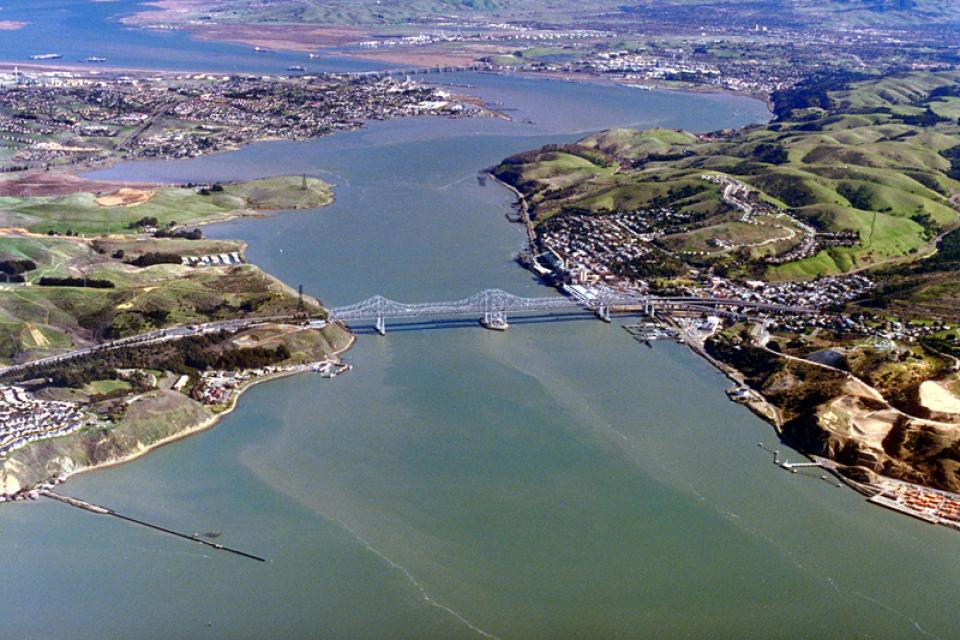Sacramento-San Joaquin Delta Inflow Outflow
The fresh water inflow and outflow of the Sacramento-San Joaquin Delta is critical to its vitality and survival.
Freshwater flows from the Delta meets saltwater from the ocean near Suisun Marsh located to the east of San Francisco Bay. Suisun Marsh and adjoining bays are the brackish transition between fresh and salt water. But the location of that transition is not fixed.
Here, tidal energy from the Pacific Ocean constantly changes the Delta, affecting water quality, temperature, pollutant movement and fish migration. Hydrologic studies suggest the Delta works like a giant washing machine agitator, with tidal forces and river flows constantly sloshing water back and forth.
This energy causes bottom and surface currents to mix and circulate over an area extending several miles in length known as the “entrapment” or “null” zone.
The zone has high concentrations of suspended sediments, nutrients, phytoplankton, zooplankton and other invertebrates, making it an important place for plants and animals; it serves as a nursery area for many fish species. The zone’s location moves back and forth from the Delta to near San Pablo Bay based primarily on the magnitude of river inflows; but, tidal currents also are a factor, moving the zone upstream and downstream 2 to 6 miles twice a day.
The Delta’s freshwater outflow also protects against the incursion of saline water.
Sacramento-San Joaquin Delta Inflow/Outflow Challenges
Water from the Delta is used for local agriculture, and diverted by municipal water agencies and irrigation districts. The exported water provides water to the East Bay Area, the Silicon Valley, the San Joaquin Valley, the Central Coast and Southern California.
Such heavy use has changed the Delta’s nature, including its flows and salinity. The changes have contributed to the decline of water fish and invertebrates, and the overall ecosystem. At the same time, several native species in the Delta estuary are on the verge of extinction.
With these challenges in mind, and further diversions of water through a Delta tunnel also under consideration, the Delta Stewardship Council is working a long-term strategy to restore the Delta.
Similarly, the State Water Resources Control Board is working on revising water quality objectives. The changes are expected to stress the importance of freshwater inflow and its interaction with salinity on the ecosystem, and the means by which it supports salmon, steelhead and pelagic fish such as the Delta smelt.
Those objectives could lead to water rights proceedings that result in greater freshwater flow to the Delta and, subsequently, Suisun Marsh and Suisun Bay.









